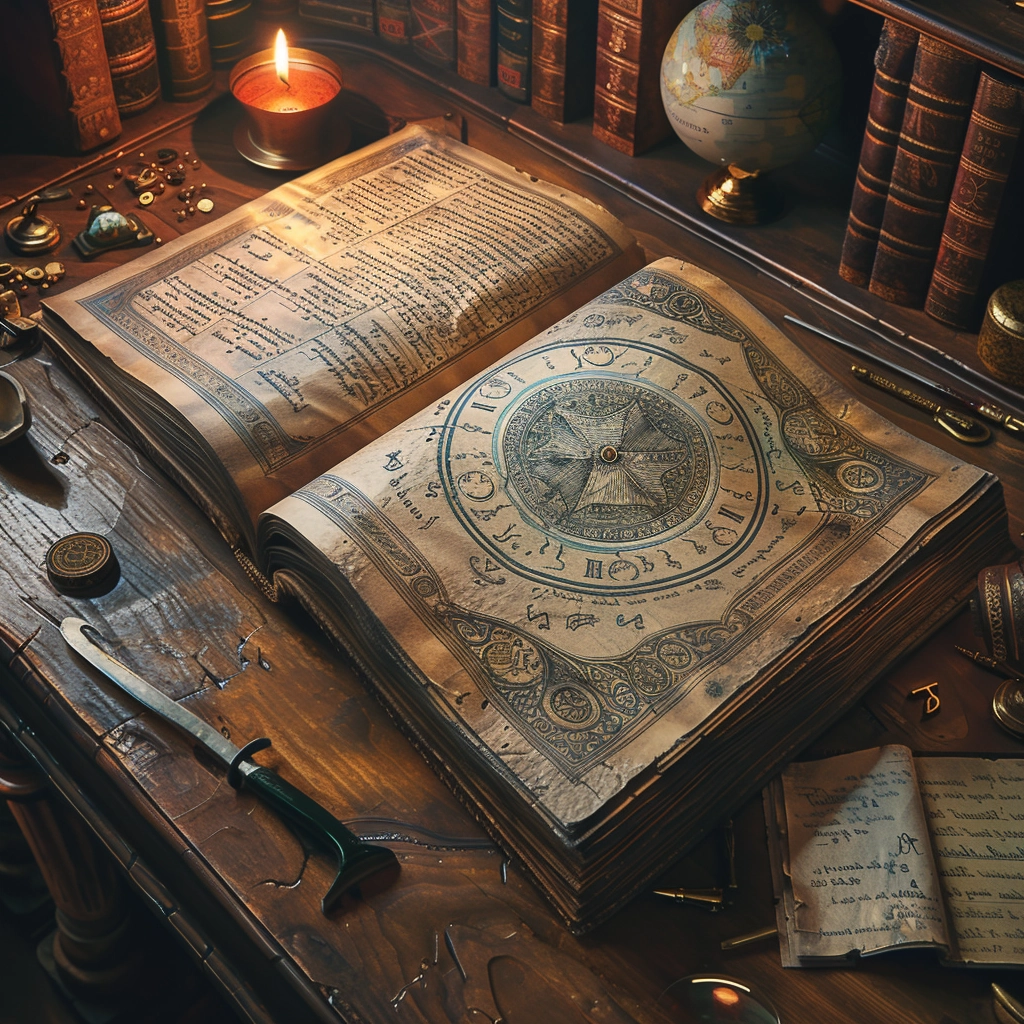
Necronomicon is a grimoire, mainly fictional, appearing in the stories of renowned author H.P. Lovecraft, who specialized in the gothic genre. Authors like August Derrieth and Clark Ashton Smith also cited it in their works. It was believed to have been somewhat influenced by 18th-century Gothic literature like the works of Walpole and Radcliffe. Lovecraft used these because he thought the allusions built up a background of ‘evil verisimilitude.
It is speculated that Robert M. Chambers’ collection of short stories, namely the ‘King in Yellow,’ had a peculiar influence on Lovecraft’s work. This may not surprise those familiar with Chambers’ style, as they know that he marvels at the mythical absurd.
Lovecraft’s Fictional Creation of the Necronomicon and Its Criticism
In one of his letters to Willis Conover, Lovecraft writes: ‘There never was any Abdul Alhazred or Necronomicon for I invented these names.” He also notes, ‘ As for seriously written books on dark, occult and supernatural themes-in all truths, they don’t amount to much. That is why it is more fun to invent fictional works like the Necronomicon and Book of Eibon.’
Lovecraft’s style has often been a target of criticism, some of which claim that his imagination ran ‘amok’ when he wrote Necronomicon. Even if such criticisms are discounted, people do not find compact reliability in his work. But that, of course, is the book’s point, ‘not to relate, to be in awe.’
Lovecraft insisted that the title Necronomicon is derived from the Greek words ‘nekros’, meaning dead, ‘nomos,’ meaning law, and ‘eikon,’ meaning image. This makes sense, as critics have depicted Necronomicon as ‘an image of the law of the dead.’
Exploring the Necronomicon’s Presence in Lovecraft’s Literary Universe
The Necronomicon is mentioned in several of Lovecraft’s works, like ‘At the Mountains of Madness’ and ‘The Case of Charles Dexter.’ In ‘The Nameless City,’ a rhyming couplet that appears at two points in the story is ascribed to the crazed author Abdul Alhazred:
‘That is not dead which can eternal lie
And with strange aeons, even death may die.’
When Lovecraft refers to ‘Old ones,’ its occult roots are specifically indicated, but surprisingly, he never mentions or even alludes to witchcraft or dark magic in his works. It has been speculated that he was intentionally subtle, but his influences are factual. The Necronomicon also appeared in ‘The Dunwich Horror,’ where the Necronomicon is consulted for a specific spell.
Necronomicon’s Influence on Occult and Magic: From Fiction to Real-World Impact
As everybody knows, in the late ’70s, a book considered a translation of the real Necronomicon was published. Interestingly enough, the occult references in that piece gave way to quite a stir among enthusiasts. This book by ‘Simon’ had little connection to Lovecraft’s version, but as it was dubbed the ‘Simon Necronomicon,’ it attracted attention. Lovecraft’s version has been stated as ‘potentially the most dangerous black book’ known to the Western world. Several spellbooks have been published after that.
The Necronomicon’s impact on occult, dark magic, witchcraft, and even sorcery and numerology has been observed. A fascinating work, ‘Necronomicon: The Wanderings of Alhazred,’ by oculist Donald Tyson, was published in 2004. It states that the Necronomicon is obviously fictional but records its vast impact. Very few other literary works have had such a tremendous but credible effect on the occult world and its acceptance. Today, the book might not be potentially significantly Lost in obscurity, but it remains a true occult masterpiece.
